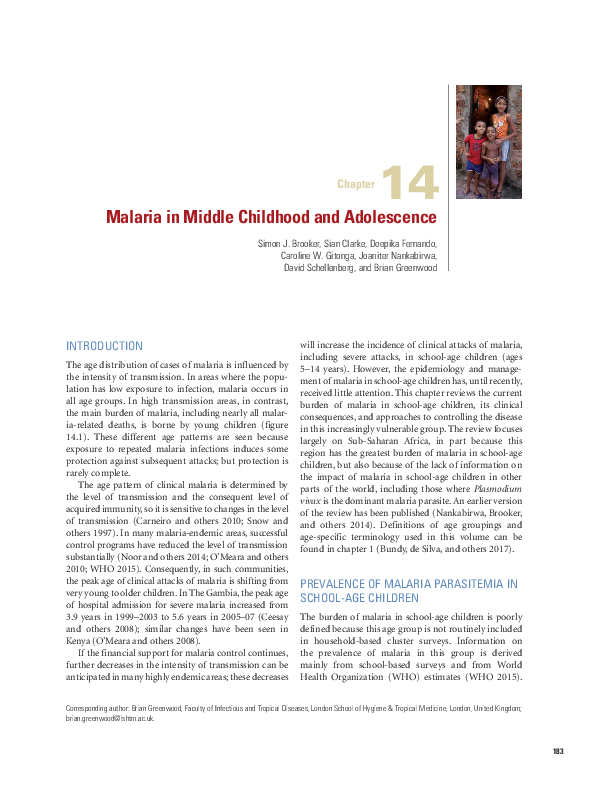
DCP Chapter 14: Malaria in Middle Childhood and Adolescence
Publication year:
2017
English
Format:
pdf (4.0 MiB)
Publisher:
The World Bank Group
This chapter reviews the current burden of malaria in school-age children, its clinical consequences, and approaches to controlling the disease in this vulnerable group, focusing largely on Sub-Saharan Africa. The two approaches using antimalarial drugs for malaria prevention include chemoprophylaxis (regular administration of antimalarial drugs to those at risk over a sustained period) and intermittent preventive treatment (IPT; periodic administration of a full therapeutic dose of an antimalarial or antimalarial combination to increased risk groups). Seasonal malaria chemoprevention (SMC) involves administration of treatment to coincide with the annual peak in malaria transmission. Intermittent screening and treatment (IST) screens individuals periodically for infection, and those infected (whether symptomatic or not) receive a full course of an antimalarial agent. Development of an effective malaria vaccine has proven a major challenge, despite the exploration of many innovative approaches, but in the longer term, vaccination may have an important role in the prevention of malaria in school-age children. Improved information on the extent of the burden of malaria and its socioeconomic consequences in this age group would enhance awareness at all levels.
>> Press here to return to the Disease Control Priorities (3rd Edition) Start Page
Read full abstract
Authors
View & Download
English
1 Documents
Document information
Publisher
Authors
Format
Rights
© Author/Publisher
Found a mistake? Help us improve!
If you have noticed a document assigned to the wrong author or any other inaccuracies, let us know! Your feedback helps us keep our data accurate and useful for everyone.
Share
Link
